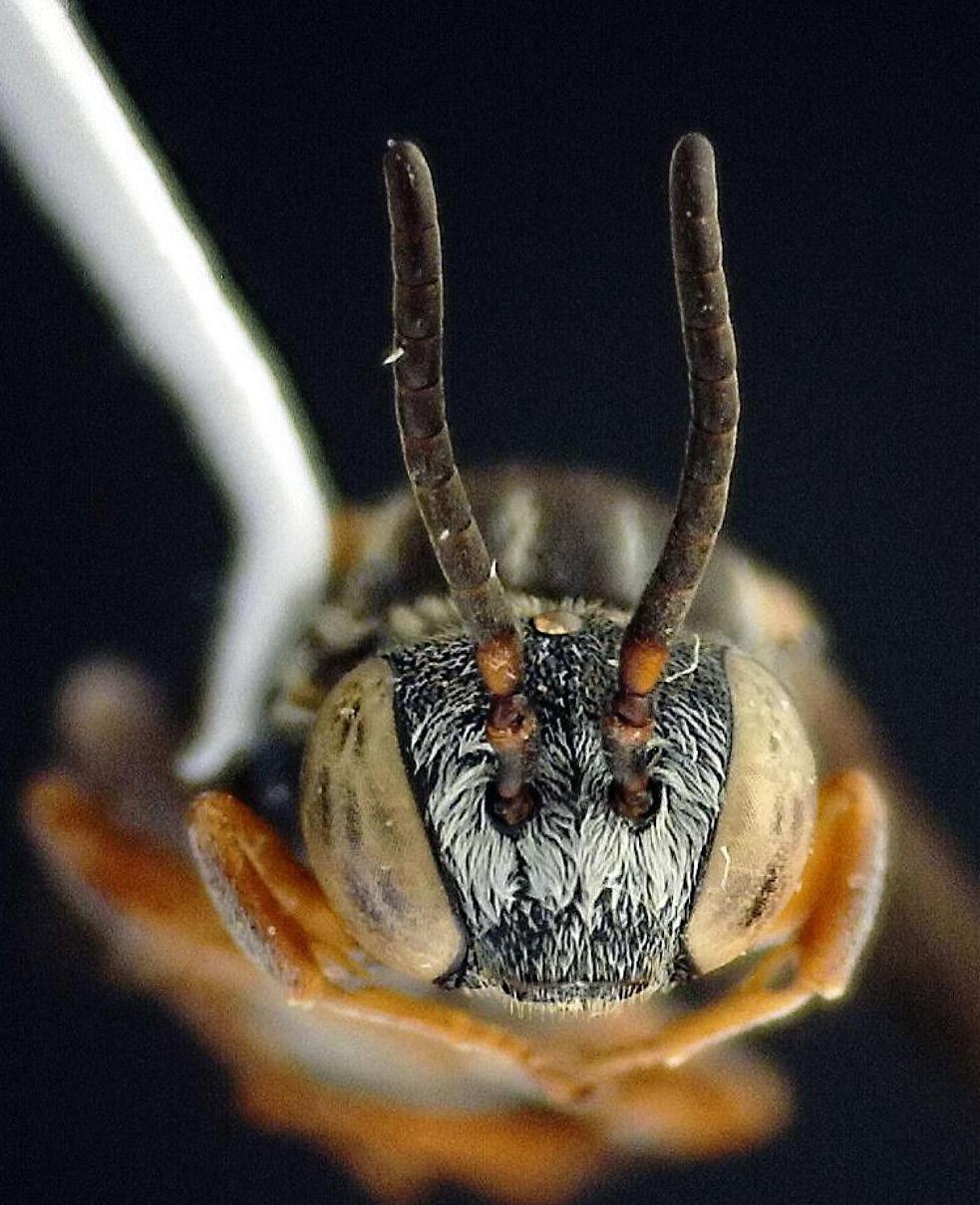
5 minute read
Ashes to wings
Wildfire research reveals bee species new to park records
Great Smoky Mountains National Park had record-breaking attendance in 2019, but the most surprising visitor was extremely small and decided to move in. Permanently. Its taxonomic name is “Epeolus in ornatus” and it’s a bee. The story of what kind of bee it is and how it got to the Smokies is an odd one, as told by Discover Life in America’s (DLIA) Director of Science and Research Will Kuhn, who discovered the bee’s presence in 2019 but only announced it in a Dec. 10 social media post. The bee is one of the few positives that derived from a hellish event: 2016’s Chimney Tops 2 Fire, which tore through the GSMNP over story. Picking up the pieces from that disaster, part of a series of wildfires, is an ongoing process, but not all of it is bad. In recent years, scientists have been assessing how an estimated 11,000 incinerated park acres have brought new life to the area. After large fires, nature doesn’t just grow back: It diversifies. Kuhn told The Daily Times in a recent phone interview he found the bee because of a “BioBlitz” in summer 2019, a DLIA-sponsored, short but intense effort to discover as many species as possible in one location. This one was called the “Fire Recovery BioBlitz” and yielded a biological treasure trove.
Bee-eat-bee
“We wanted to look at the effects of the ... fire, so we collected insects from a high burn area and a low burn area to compare them,” Kuhn explained. “The Baskins Creek area was a severe burn: It scalded the hillside

Photos Courtesy of Will Kuhn
A bee species discovered in Great Smoky Mountains National Park in 2019 is one of many forms of life that emerged to scientists after 2016’s wildfires. and took out all the overstory, all the trees there. It really opened up all this habitat.” Since the fire, invaders have moved in — what Kuhn called “colonizing species” that lay dormant until the fire created the right conditions for them to emerge. It starts with new plant life and, therefore, new flowers. Then you get new pollinators, like “Epeolus inornatus,” which is a cellophane-cuckoo bee. Moreover, it’s a cleptoparasite, Kuhn said, an animal that lays its eggs in other bees’ nests, which then hatch and devour the native egg. “Cellophane bees make these little nests in the ground and line them with something that looks like cellophane,” he explained. “Then they stock their nests with pollen, lay an egg in there. Their young feed on the pollen and eventually emerge as a new bee.” This newly discovered GSMNP insect — which is not a hive species but a solitary insect — uses other nests’ pollen stores to feed their young. When Kuhn found the bee during the BioBlitz, he knew what it did, but he didn’t know if he was seeing something new to the area. So he did what most 21st century people do when they’re trying to identify something: post it on the internet. It was more scientific than querying a Facebook group, of course. Kuhn posted images of the bee on a site
Continue to page 27
Tennessee Readiness
In God We Trust


The Prepper Store

OUR mission is simply to help you to prepare for ANYTHING may come. We have something for EVERYONE. Backpackers, Survivalists, ANYONE that just wants to be.
FOOD/STORAGE CAMP/HIKING TACTICAL/SURVIVAL

called iNaturalist, a sort of social media hub for budding biologists and professionals looking for a revelation. That’s what scientist Thomas Onuferko found when he came across Kuhn’s pictures and identified them. It was a sort of honor for him, too: Onuferko was the first scientist to describe the species and has published numerous papers on bees, both cleptoparasitic and otherwise. “I have a whole drawer of insects from this event in 2019,” Kuhn said. “Lo and behold, the world expert on this genus of bees saw it and identified it.” He added not only is the bee new to the park, it’s also somewhat knew to human knowledge because Onuferko’s description of the bee was first published in 2018.
Here for a while
Even though the bee has parasitic tendencies, Kuhn said local honeybee owners have nothing to worry about. “This species poses no threat to the western honey bee,” he emailed. “I believe cleptoparasitic bees tend to be pretty specific regarding what species of bee they will parasitize and social species are not that list.” Nevertheless, he still informed the park about his discovery, noting the bee has likely been around for years, but is only one of approximately 3,500 native bee species in North America, most of which are solitary. “They’ve been here diligently pollinating native plants likely for millennia before people brought the western honey bee over from the old world,” Kuhn said.
Ongoing science
While the discovery of this fascinating apid is great, it’s part of a bigger picture, Kuhn said. “There’s a whole lot of other effects that this fire had on the environment,” he said. “It’s not just this one bee. ... There are probably tens of thousands of species that we just haven’t detected yet even after 22 years of studying them for this big project we’re doing in the Smokies.” Researchers have discovered 10,411 species in the park over more than two decades, according to DLIA data: 1,028 of those are new to science. And those efforts are ongoing. Kuhn said Blount Countians and visitors can participate in ongoing science through park-based DLIA’s “SnapIt & MapIt” program, in which biologists of all ages can use their phone, the iNaturalist app and a downloadable guide from the program to archive their observations.
Readers can learn more about this interactive community at dlia.org/snapit-mapit.



WELCOME TO THE ADVENTURE SIDE OF THE SMOKIES








